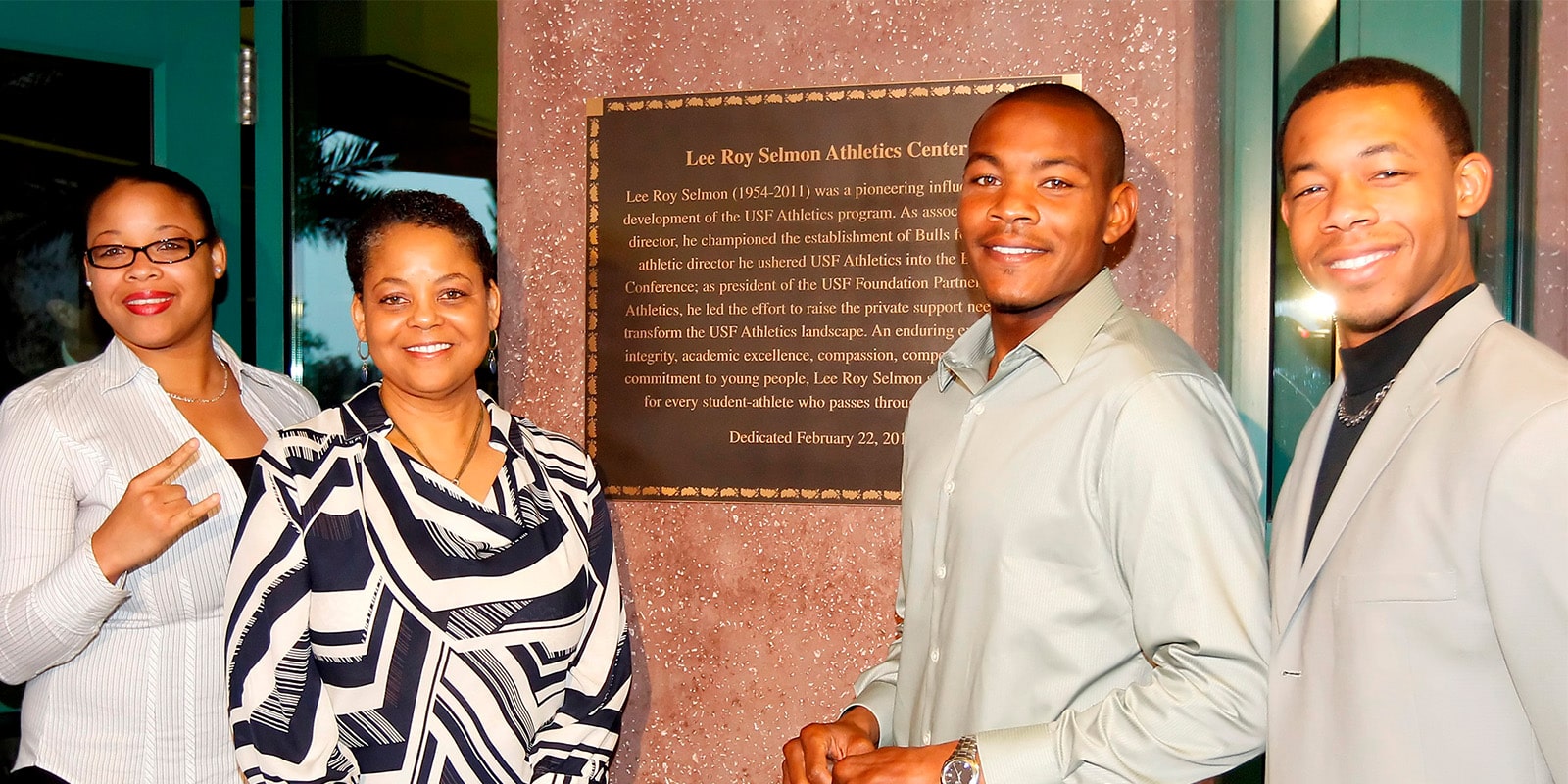
(From left) The Selmons: Brandy, Claybra, Lee Roy Jr. and Chris
The Selmon Mentoring Institute Prepares USF Student-Athletes for Life After the Games Have Ended
Dec. 15, 2015
Inside Claybra Selmon's house, an old document contains the typewritten thoughts of a humble man whose larger-than-life presence forever permeates the University of South Florida and the Tampa Bay area he once called home.
The words spell out a dream of her late, legendary husband, Lee Roy Selmon — a vision he held close to his heart from the time it dawned on him early in his stellar playing days with the Tampa Bay Buccaneers. And, over the past two years, his hope has come to life at USF in a powerful new way that is enriching the lives of the young athletes he always cared so deeply about.
You can find it in the curriculum pages and classroom sessions of the Selmon Mentoring Institute, a life skills and career development initiative under the umbrella of USF Athletics’ “Enhancing U,” which helps student-athletes prepare for the real world.
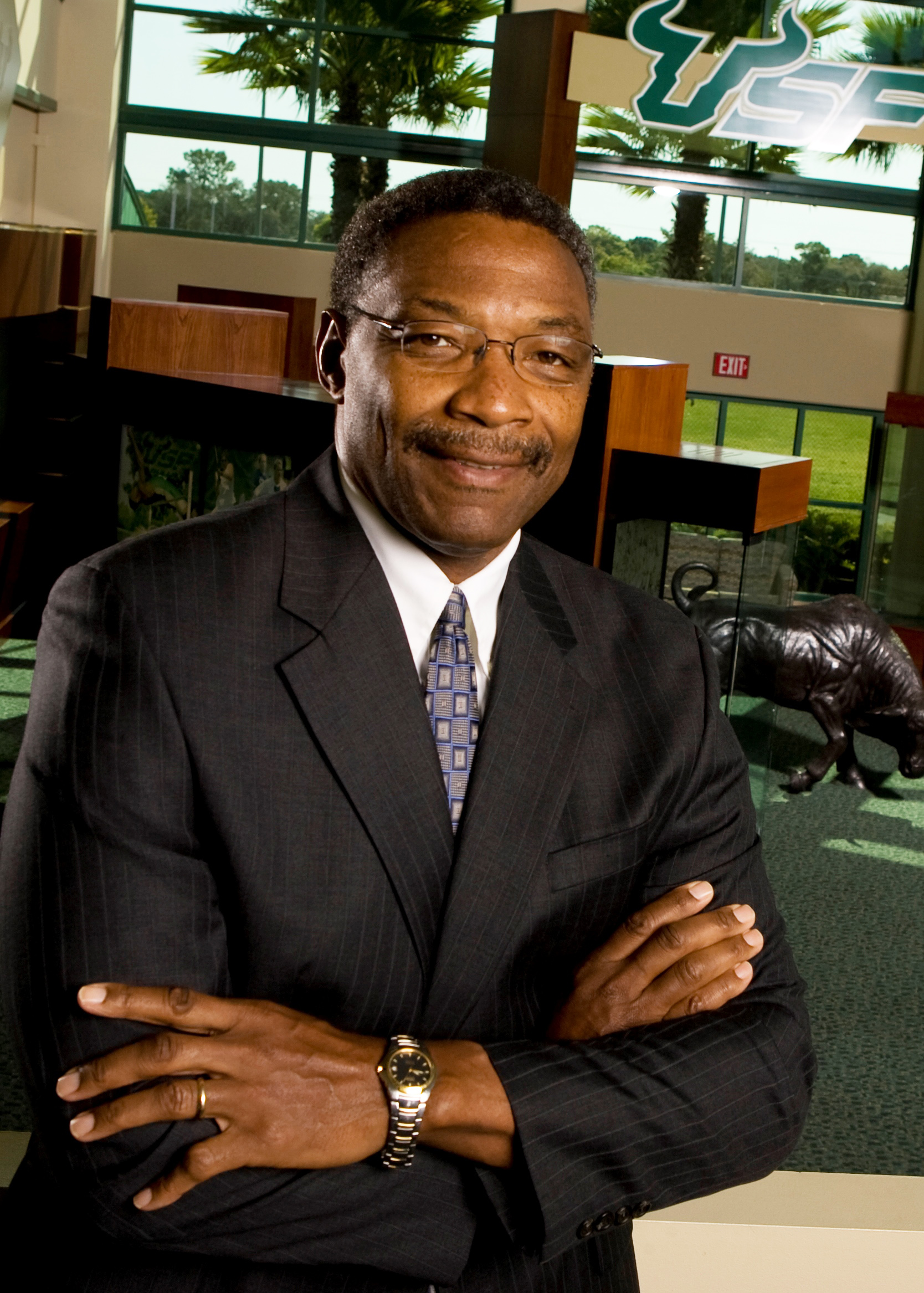
You can find it in the valuable one-on-one relationships with mentors the institute has arranged, pairing those accepted into the two-year program with experienced professionals in the community. And you can hear it in the soft, steady words of Claybra herself, recalling how much Lee Roy was always concerned for the well-being of young players — whether on the Bucs when he still played, or in the collegiate ranks at USF.
“Honestly, the first time I heard him talk about his mentoring idea was back in 1979, when he was early in his career with the Bucs,” she says over lunch near the USF Tampa campus. “Even though he was young himself, he was starting to see that a lot of college players coming out of school simply weren’t prepared for life in the pros, with no idea of how to manage their finances or thoughts of planning for the future."
So Selmon, while working for First Florida Bank during his early 1980s off-seasons, drew up a basic outline for how he would implement such a program. “Because Lee Roy was the youngest of nine children, he knew what mentoring was — he had five brothers and three sisters and always had somebody to rely on for guidance,” she adds. “And I think he wanted to pass that on.”
But the mission would have to wait for its time to take root. After a back injury in 1985 forced him to retire early from the game, at only 30, Selmon became immersed in his own post-football journey — building a successful career as a bank executive in Tampa, and then accepting a job as USF’s assistant athletic director in 1993.
“I think probably a large reason Lee Roy decided to go to USF, when that position became available, was because it gave him a direct connection to student-athletes and this idea he had of helping mentor them,” says Claybra.
Selmon forged an indelible legacy at the university over the coming years on so many fronts. He worked tirelessly to help generate the support that brought football to the university in 1998. Taking over as athletic director from 2001–2004, he guided the Bulls into Conference USA and then the Big East, becoming a towering figure in the area, respected for his gentle manner, integrity and commitment to helping youth. And when health issues forced him to step down as athletic director, he made a major fundraising impact as president of the USF Foundation Partnership for Athletics, continuing to reshape the face of Bulls sports.
But one day, his wish would finally become a reality at the university he loved — and that loved him back. Even though he was never able to witness it in action, his presence can be felt in every facet of the program that bears his name — and in the USF student-athletes who have acquired the tools and knowledge to make their way in the work force when the games finally end.
***
Greg Morgan’s second-floor office in the Lee Roy Selmon Athletics Department is filled with stacks of planning folders, books and student papers. It’s a testament to the daily whirlwind he lives as USF’s director of student-athlete career development and student engagement and the person tasked with developing and directing the Selmon Mentoring Institute.
A 2009 graduate of USF, Morgan earned his master’s degree in higher education at Loyola University in Chicago and went to work for four years as director of education and alumni services at the Sigma Chi Fraternity International Headquarters in Evanston, Ill., overseeing all of the organization’s collegiate leadership and educational programs. He returned to USF in May 2013 to direct the department’s career development endeavors — including launching the Selmon Mentoring Institute, known initially as Mentoring U Selmon Style, a high honor since Morgan had gotten to know Selmon as a USF undergrad.
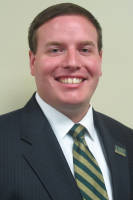
When he got back to campus, the basic foundation was already in place. Associate director of intercollegiate athletics Jodie Libadisos had built Enhancing U several years earlier — with the new life skills component filling a void that the existing academic curriculum didn’t address. She likened the program to “the hyphen between student and athlete,” a crucial connective piece of their college education.
Selmon, of course, couldn’t have been happier about that development. The NFL Hall of Famer had always made a habit of informally mentoring student-athletes and helping them understand that the importance of preparing for life after the final whistle. But now there would be an actual program to further his idea, and he did all he could to provide input to Libadisos and help her network with donors to finance the program.
Tragically, he never truly saw it come to fruition. His unexpected passing in September 2011, following a massive stroke at age 56, sent shock waves through his USF family, the bay area and the sporting world as a whole. But amid the sadness and loss, Selmon’s old dream regained momentum.
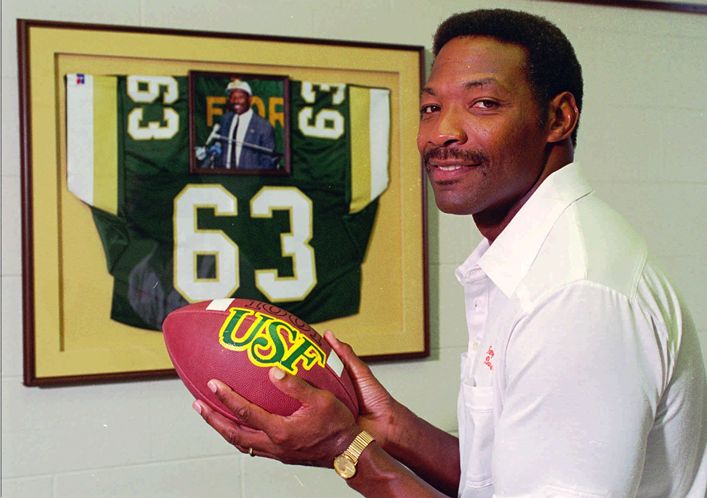
First, Outback founders Chris Sullivan and Bob Basham — who had acquired ownership of the popular “Lee Roy Selmon’s” restaurant chain — contacted the university about their desire to honor the icon. Soon, other donors expressed their desire to do the same. There was no question about what form the tribute should take: an ambitious, fully developed career skills and mentorship program — offering course credits — within USF Athletics. In short order, funding was secured to start the wheels in motion, leading to the creation of Morgan’s position in 2013.
“There was a rough idea of what it should look like when I got here,” he recalls. “For the first six months, my goal was to take the experience I had in program development and research what other institutions had.”
Little by little, he structured a comprehensive course of study, open to students starting in their junior year. Everyone would have to apply with a video interview, explaining why they wanted to be in the program and what they hoped to get from it — and a selection committee, including Claybra Selmon, reviewed each one.
The inaugural class of 25 student-athletes entered as juniors in 2014, and this year marks the first with more than 80 combined in both junior and senior tracks in the institute. One experience common to all students are “playbooks” — in which they delineate their list of objectives and a separate list of action steps to fulfill them.
“For instance, a student might write, ‘In three to five years, I want to be a practicing physical therapist,’ ” Morgan says. “Then, they write out their short-term goals: such as, No. 1, needing to understand what the PT profession is; No. 2, getting at least 180 hours of observation; and No. 3, getting into PT school. Well, that’s great — but we help them focus on the specific steps they need to take to make that all happen.”
The net result is a document filled with a detailed, well-reasoned approach to pursuing a career. On the back, students list their strengths, their values and areas to develop. “Maybe a student needs to get better at networking, or learning to hold a better conversation, or not act nervous in front of large groups — whatever it is, we work on it,” Morgan explains.
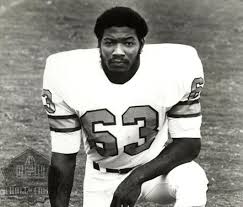
Every playbook prominently displays the No. 63 on an inside page — the old Buccaneer jersey number Selmon wore from the time he became the team’s first-ever draft choice out of Oklahoma in 1976. And the back cover features a defining Selmon sentiment: “Our kindness and goodness are the best things we can offer in this life.”
The playbooks come in especially handy when it’s time for a defining part of the program: meeting with mentors. Here are two examples of how that relationship has worked — and, in the end, benefitted both parties.
***
Brynjar Gudmundsson had heard about the program in 2014 and how it was helping student-athletes into the next phase of their lives after sports. The Bulls standout offensive lineman, red-shirted as a freshman, contacted Morgan to learn more.
“I just thought it was too good of an opportunity to pass up,” he says. “We miss out on a lot of things — opportunities to meet with different people because of our schedules and balancing sports and school.”
Gudmundsson has learned to balance well. He earned his bachelor’s degree in communications last May, and is now a USF graduate student pursuing a master’s in business, with one more season of football eligibility remaining. He reports for team meetings at 6 a.m., finishes with practice around 11 a.m., has a break of several hours to study and do homework, then attends class for more than three hours at night. The experience has surpassed his expectations.

One reason for his positive feeling is the relationship he has developed with mentor David Goldstein, a longtime Tampa real estate executive who manages 25 area shopping centers and vice chair of the Bulls Club board.
“At one of our meetings, a representative from the Selmon Institute came to speak to us about the program — and frankly, I didn’t really know anything about it,” he says. “But as they described it, I thought it sounded great. And when they asked if anyone was interested in becoming a mentor, I was the first one to raise my hand.”
Goldstein was paired with Gudmundsson due to their strong common interest of business, and was immediately impressed by the athlete’s drive and desire when they met this summer. “He was bright and articulate,” Goldstein says. “And the fact that he was a graduate student, juggling football and academics, showed me how directed he is. He just needed some guidance.”
They have spoken in person and by phone as frequently as their busy schedules permit, and Gudmundsson has even shadowed Goldstein at work. “My strong recommendation to Brynjar is to concentrate now on football — I think he’s got an excellent shot at the next level, and there’s plenty of time for him to get into a profession after football,” says Goldstein. “When he’s ready for the job market, I’ll be here to help him.”
For both student-athlete and mentor, the experience has been a win-win. “David really has taken an interest in guiding me and that’s been a big help,” says Gudmundsson, whose leadership has helped propel the Bulls to their first post-season berth in five years, the Dec. 21 Miami Beach Bowl. Both agree that a genuine friendship has formed.
“I really think this has benefitted both of us,” says Goldstein. “However I can help Brynjar down the road, I plan to. And I really feel that this program has reinvigorated me, providing such meaningful way to contribute.”
***
Olha Morekhodova, a senior on the USF volleyball team, has only lived in the United States since high school, when her parents moved their family from Buenos Aires to Key West to make a new start.
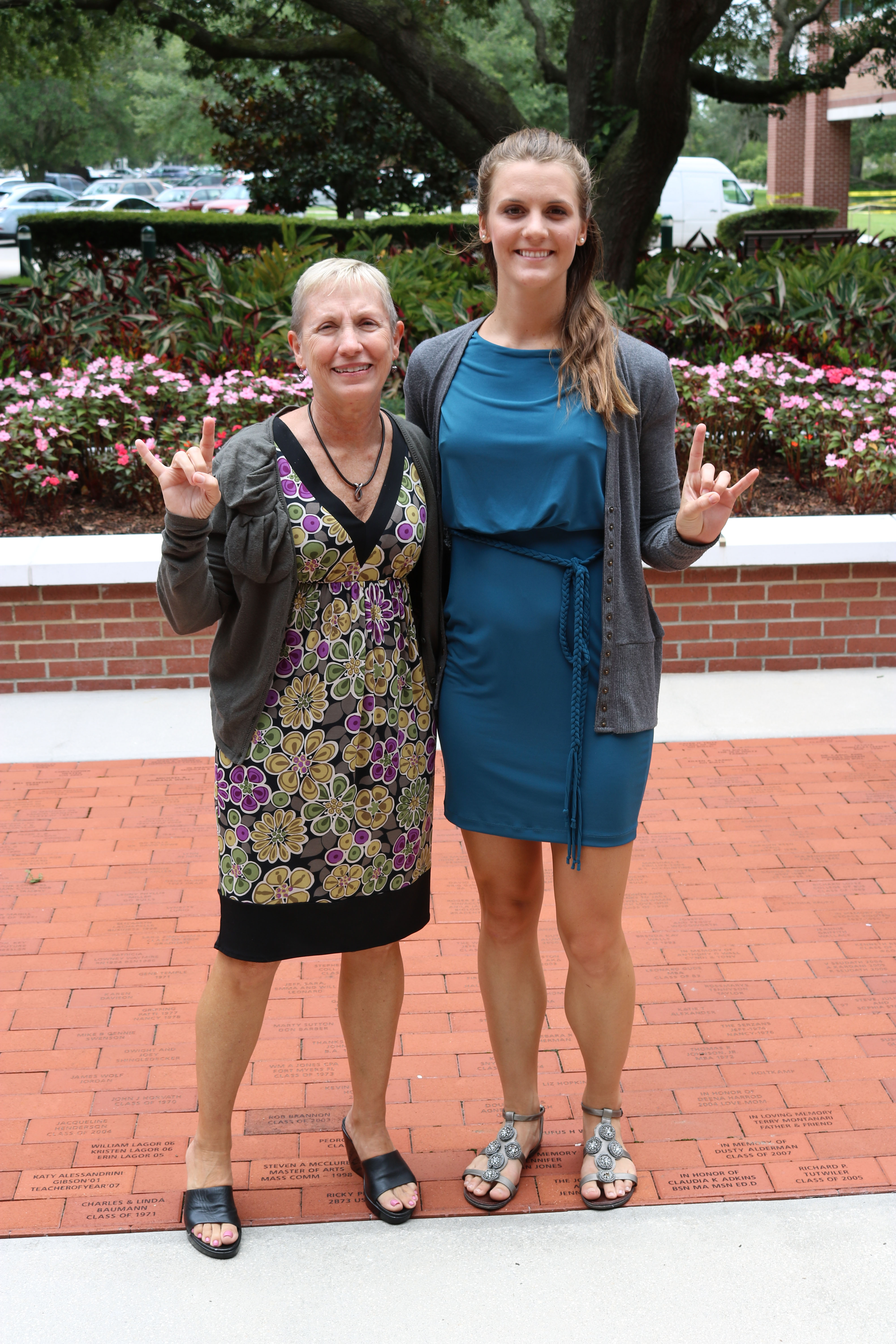
A budding national team player in Argentina, Morekhodova made the most of her volleyball talent after moving to America — named Monroe County Player of the Year at Key West High, earning All-American honors at Indian River State College and now a valuable setter on USF’s squad. But with a major in business management, she was immediately drawn to the program as a way of opening doors off the court.
“My first year as a junior, I took a leadership class, with many speakers to share their experiences,” she recalls. “We had a lot of exercises on how to handle ourselves and speak if we’re at a conference, instead of being shy and hiding in a corner. And we learned to set career goals and pursue them, how to go through job interviews — it’s all been so helpful.”
This year, more help has come from the mentor she has been paired with — USF alumna and corporate business executive Betty Otter-Nickerson, a member of the USF Foundation Board and USF Alumni Board. They felt an instant connection when they first met at the Marshall Center, and since then Morekhodova has shadowed Otter-Nickerson at a board meeting, accompanied her to a luncheon and gained confidence in the process.
Otter-Nickerson was a natural fit as a mentor for Morekhodova, beyond her business experience. She has always loved sports and served five years as chief operating officer of Lance Armstrong’s LIVESTRONG Foundation.
“I’m just in awe of Olha,” she says. “She had to overcome the obstacle of starting over in a new country, and she has still flourished. I’ve just tried to help her in different ways, such as ‘What kind of professional persona do you want to build? What is it you really want to do? And don’t be so concerned that this is what I’m going to do the rest of my life, because on average people change careers three times.”
“It’s just unbelievable,” Morekhodova adds. “A lot of people don’t have this type of support. When I tell my friends from other places that I have a mentor, they say, ‘How did you get a mentor?’ And I tell them that’s what they do at my school.”
Otter-Nickerson knows it all began with the man she feels fortunate to have met several times — even once sitting and working at Selmon’s desk during a visit while he was out of town. “His vision for this was spot-on,” she says, “and to see that vision played out — and have the honor of being part of it — is really heart-warming.”
***
A large photo of Lee Roy Selmon hangs prominently on a wall inside the main classroom of the program that bears his name. No lecture or presentation can pass without students and teachers feeling his presence.
It was certainly that way on a recent evening when former longtime USF director of alumni relations Ron Sherman, now retired, stopped by as a special guest. He told the class how hard Selmon worked to raise money for football at the university — a pursuit Sherman shared with the old NFL great on various fundraising outings.
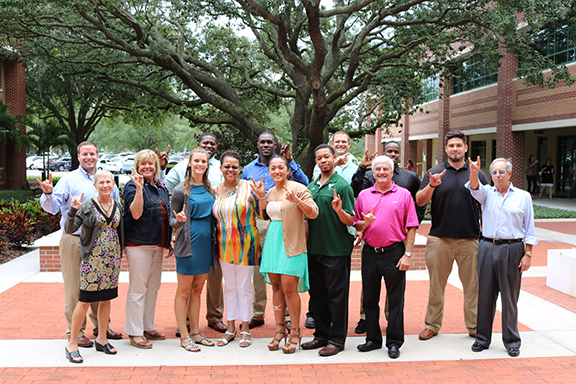
“It was amazing to see people’s respect for Lee Roy anywhere we went,” he told the class, proceeding to give them a brief history of Selmon’s many achievements in life, followed by a lively discussion about creating job opportunities through networking.
The student-athletes soaked it all in — one of countless scenes from a program that Morgan says is beginning to attract attention from other universities. He and Jodi Libadisos made a presentation about the Selmon Mentoring Institute at a national conference over the summer, and officials from numerous universities followed up with questions on how to start such a program. “Now,” he says, “we’re getting to showcase what we’re doing here at USF.”
The work and success of the program deeply touches members of Selmon’s family. Says son Chris: “It gives me a sense of pride, a desire to carry on that legacy, and to touch other people. You don’t have to be a Hall of Fame player to do that. My dad had a lot of humility and compassion for other people, and that’s what made the difference.”
Claybra has authored a soon-to-be published book of personal stories about her late husband, A Life That Shined. And it shines brightly today in the program he inspired.
She feels uplifted knowing his dream has been realized. “He gave a lot to the community and this is what he wanted; this is what he felt part of his purpose in this life was,” she says, her eyes tearing. She pauses momentarily to collect herself, then continues:
“So it’s really wonderful to see that people appreciated him and loved him so much. If he were able to witness what was happening, he would be amazed. He had no hidden agendas or selfish ambition. His goal was to leave an impact — even if it was with one person, and a young person in particular. If he did that, he felt that he’d done something great.”
